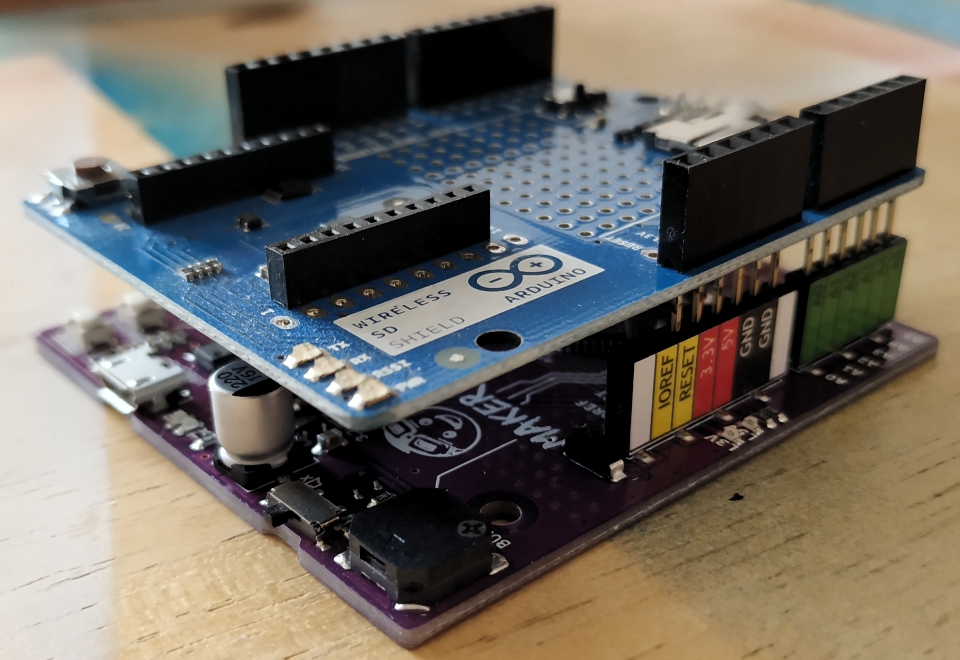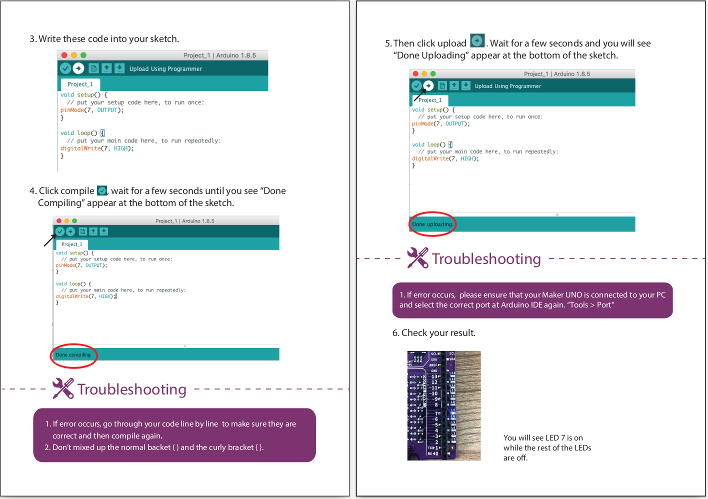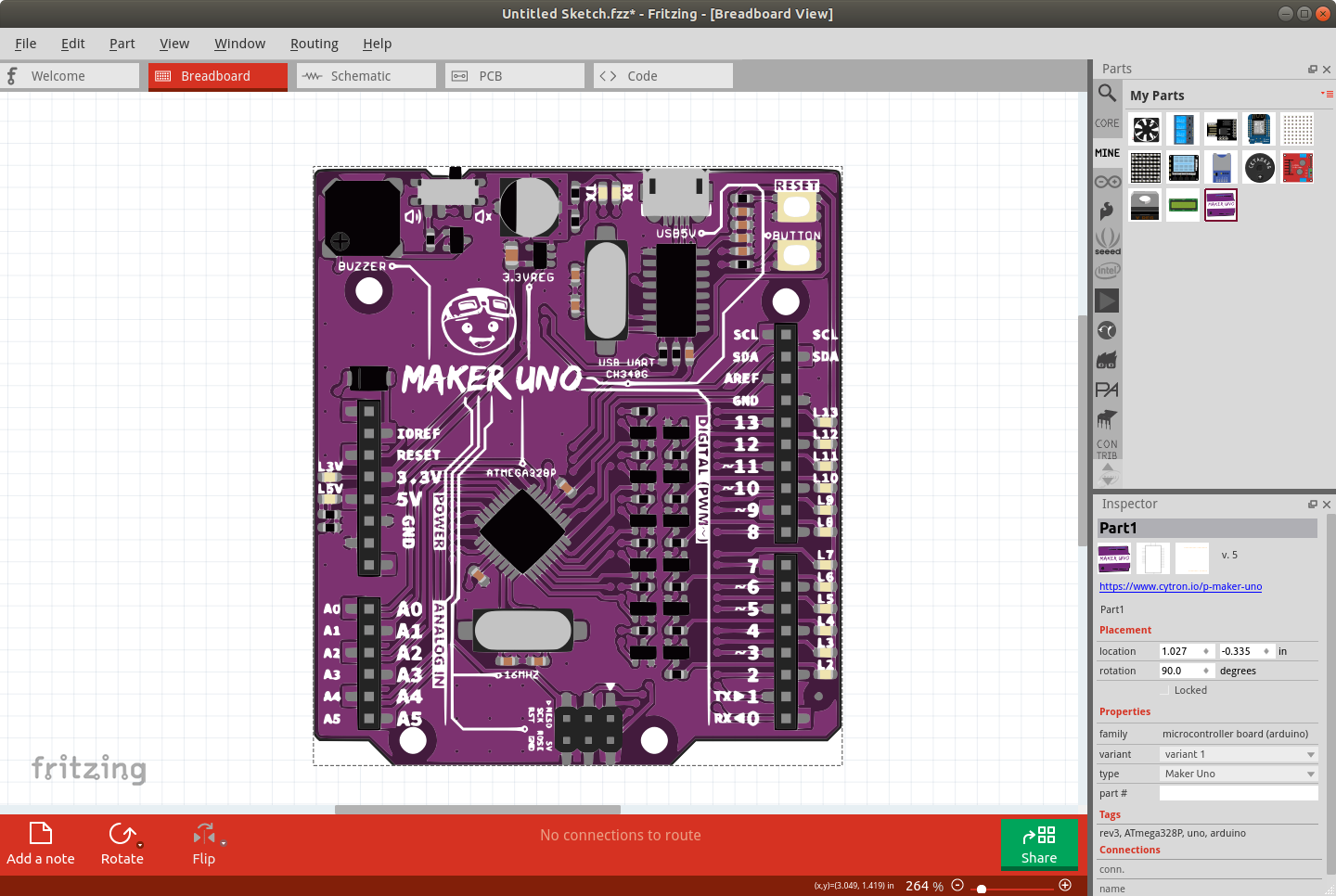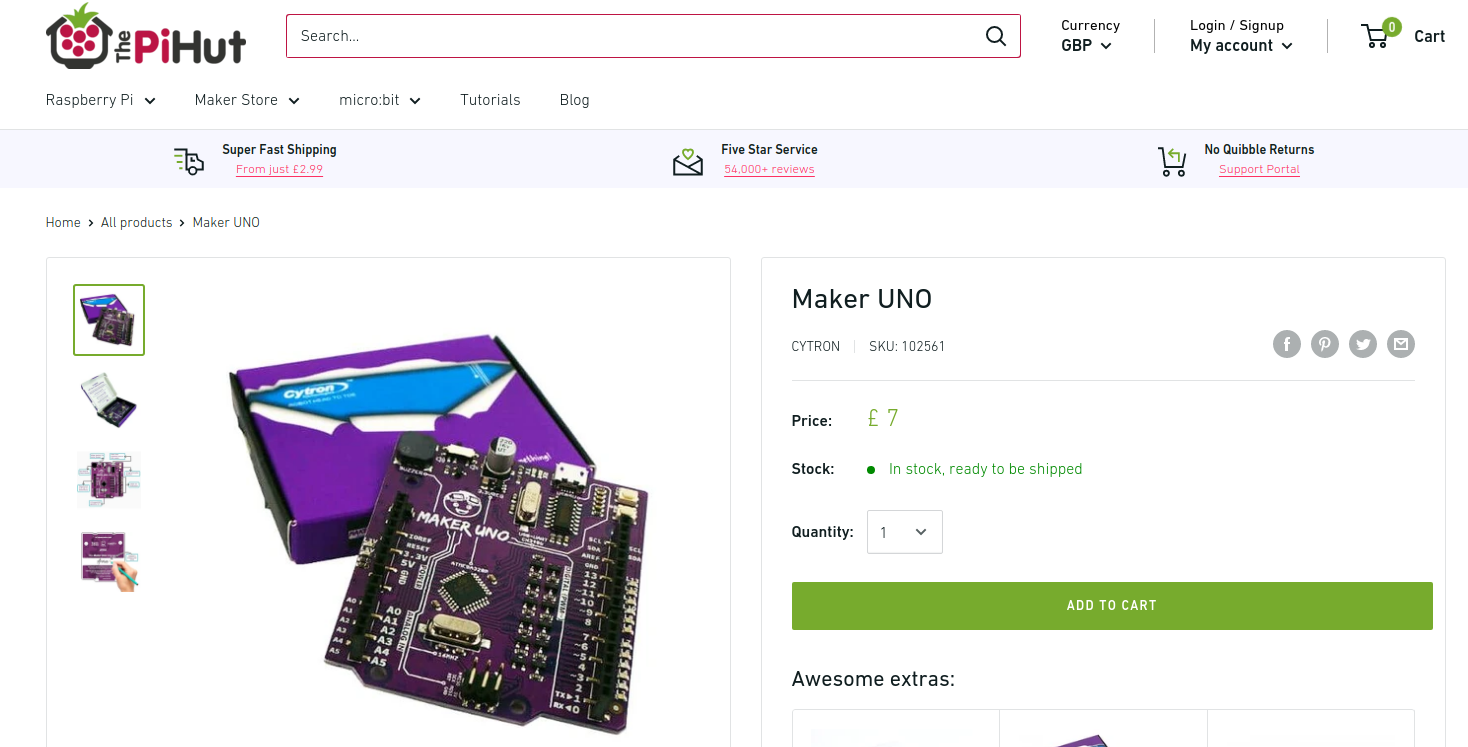Monday Microcontroller: MAKER UNO
Another Arduino Uno compatible?

I may have a few boards in my collection.
So this is another Arduino clone right?
Short answer is yes, but this is a little different.
So what is it?

The Cytron MAKER UNO is an Arduino Uno clone that is firmly designed for educational use. Clear GPIO pin numbering, built in LEDs, buzzer and button mean that learners can start building simple projects and in doing so build their confidence in electronics and programming.
Cytron? That name sounds familiar!
Well remembered! Cytron also make the MAKER DRIVE which I looked at in April.
Dimensions

Measuring 69mm by 60mm the MakerUNO looks like a typical Arduino Uno and shares a similar layout but this board is slightly larger.

So I compared it with two other Arduino boards. At the top I have my original Arduino Uno, and to the right is a 4tronix 4duino pro which is my go to Arduino board.
Can I use a shield?

Yup, Arduino add on boards (shields) are compatible.

Hi reader!
What's on the board?

The MAKER UNO has no DC barrel jack input, it relies on a micro USB port for data and 5V power. There is also no VIN input on the board to power via an external power source.

The usual array of GPIO pins are present, 6 analog pins, 14 digital pins of which 6 can be used with PWM.

The stickers are optional. Handy for class but I'm not that keen so will take them off when they get grubby.

Three big differences with this board are that there is an additional push button, connected to pin 2, which can be used in our project.

There is a built in buzzer for simple tones and music, and there is a off switch too. Useful if using these boards in class.
Blinky lights as standard! pic.twitter.com/6ZVtXlFtvE
— biglesp (@biglesp) June 13, 2020
Lastly for pins 2 to 13 we have built in LEDs. But what is so important about that? Have you ever wanted to know if a GPIO pin is working? Did you ever put in an LED backwards? Well these LEDs will show you that the pin in working correctly. so you can diagnose the issue a little quicker.
So show me something cool!

Here is a quick Arduino sketch which I wrote to blink all of the LEDs really quickly! It uses three for loops, one in the setup, another two in the loop. The setup for loop is used to set each of the pins (3 to 13) as outputs. The other two for loops are used to turn each of the LEDs on and off at high speed.
int pin;
int i;
int time;
void setup() {
for (i = 3; pin < 14; pin++) {
pinMode(i, OUTPUT);
time = 3;
}
}
void loop() {
for (pin = 2; pin <14; pin++) {
digitalWrite(pin, HIGH);
delay(time);
digitalWrite(pin, LOW);
delay(time);
}
for (pin = 13; pin >1; pin--) {
digitalWrite(pin, HIGH);
delay(time);
digitalWrite(pin, LOW);
delay(time);
}
}
Learning Resources
Lessons

One of the key selling points for this board is that there are a series of lessons (PDF Link) which take the learner through setting up, using the onboard input / outputs and then connecting to external components.
Fritzing

There is even a Fritzing part (Direct Link) for this board, very useful when creating resources for class or blogs...hint.
So what do you think of this board?

I really like the MAKER UNO, and I like what Cytron, the creators, are highlighting by adding the extra features. The built in LEDs, buzzer and button are simplifications and while they are not teaching us how to wire up components, they are enabling anyone to get comfortable with the code and the device, before introducing breadboarding.

I'll still be using my 4duino Pro as my go to Arduino, but the MAKER UNO board will the one that I choose to use with kids at events.
So where can I get one?

I picked mine up from The Pi Hut for £7. I purchased the basic version, bare board.

But there are other versions, including a full blown EduKit with motors, LEDs, breadboard etc.
If you do not live in the UK, the MAKER UNO can also be bought direct from Cytron.
